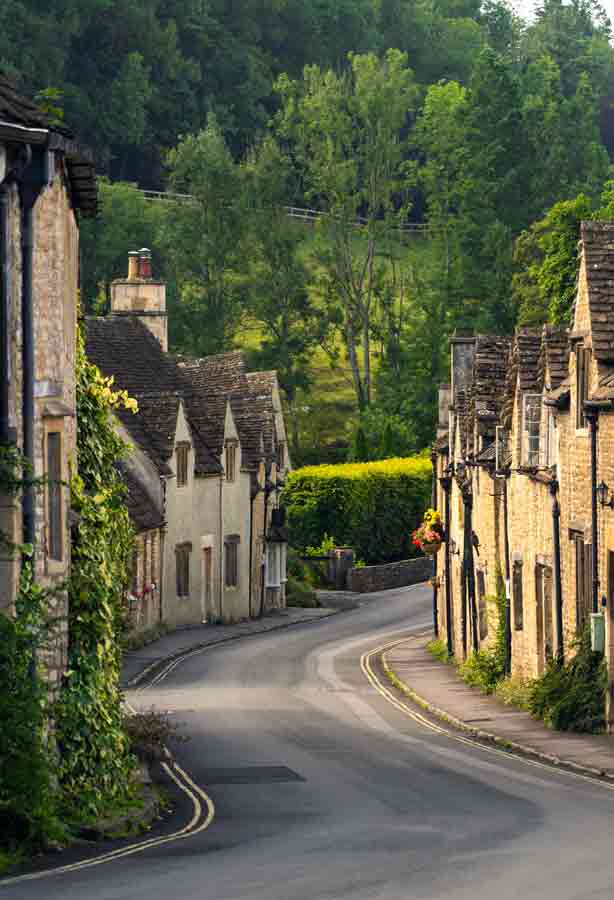The United Kingdom is home to over 6,000 villages and small communities spread throughout England, Northern Ireland, Scotland, and Wales. Larger than a hamlet and smaller than a town, these villages typically have a population from a few hundred to several thousand residents. Some act as quiet commuter settlements for nearby urban areas, while others — thanks to their beauty and history — attract hordes of tourists and sometimes even location scouts for film productions. If you’re keen to have a starring role yourself, here are nine of the prettiest small villages in the U.K.
Castle Combe, England
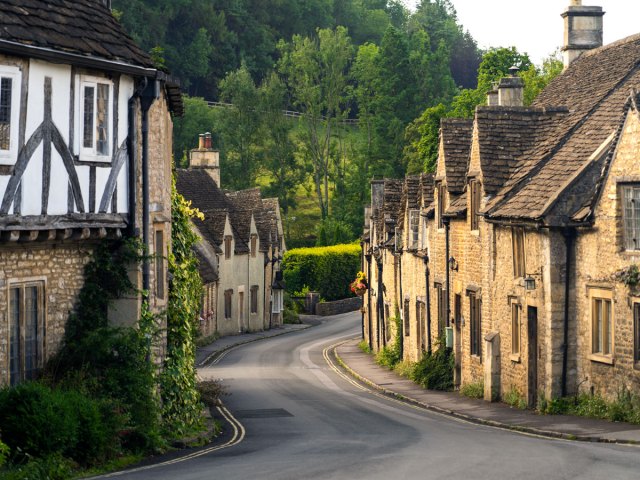
Deciding which village in England’s gorgeous Cotswolds region is prettiest is no small task. Bourton-on-the-Water, Stow-on-the-Wold, Bibury, and Chipping Camden are all deserving of a place on this list, to name a few. Still, Castle Combe is a standout.
Just like its neighbors, planners have long insisted on the use of the local sandstone for its housing stock, which resembles the color of honey or caramel depending on the light. Throughout the village, gable ends and skinny chimneys poke out above the ivy and rambling roses that cover walls and surround windows. The By Brook flows gently through the middle of town, with its leafy surrounding trees providing a rural backdrop. Castle Combe also sets itself apart as a filming location for Downton Abbey and Steven Spielberg’s 2011 movie War Horse.
Grasmere, England
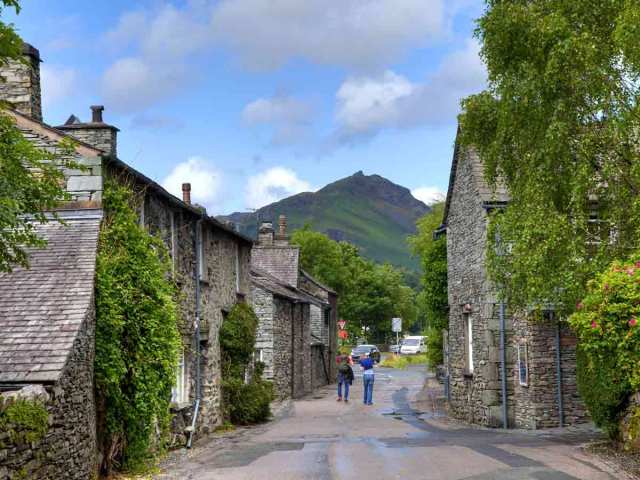
Poet William Wordsworth was among the many who have been enchanted by the village of Grasmere in England’s Lake District. Wordsworth lived at Dove Cottage from 1799 to 1808, and is now buried in the graveyard at St. Oswald’s Church in Grasmere. Nearby is Wordsworth’s daffodil garden, where wild flowers still flourish in a space that’s a fitting tribute to the poet’s most famous work, “I Wandered Lonely as a Cloud.” Next door, you’ll find the Grasmere Gingerbread Shop, where bakers follow Victorian chef Sarah Nelson’s original 1854 recipe for the scrumptious cake-cookie hybrid.
Port Isaac, England
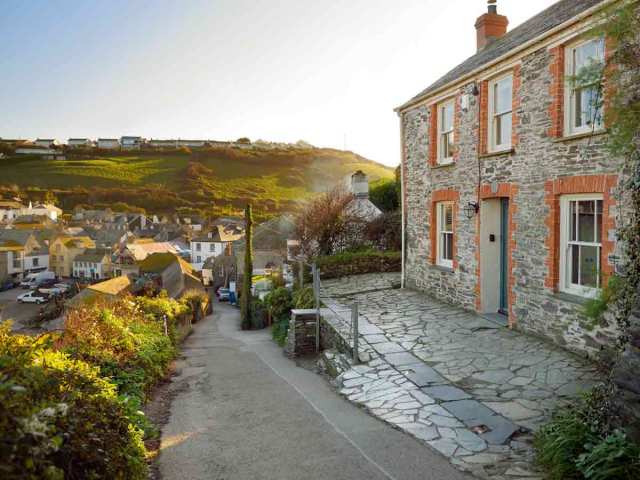
Charming Port Isaac is perched on England’s stunning North Cornwall coast. In peak season, Port Isaac swarms with visitors who know it as the setting for Doc Martin, a popular television series starring Martin Clunes in the titular role. Long before the location scouts arrived, though, Port Isaac was a fishing village and a bustling port where cargos of timber, stone, and coal were traded. Whitewashed cottages dating from the 18th and 19th centuries still line the tightly-packed streets that lead down a steep hill to the harbor. The smallest street of all is Squeeze Belly Alley. Measuring just 18 inches across at its narrowest point, it links Dolphin Street and Fore Street.
Plockton, Scotland
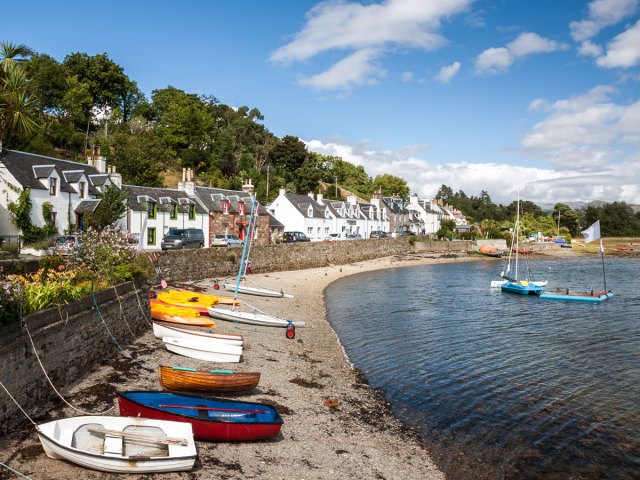
Beautiful Plockton is one of the many gems of the Scottish Highlands. Because of its northerly latitude, you might be surprised to see palm trees thriving here. However, Plockton is nestled in a sheltered bay on Loch Carron, which means it enjoys a surprisingly mild microclimate and rarely sees winter snow. The village is a delightful place from which to explore the Lochalsh Peninsula, drive the challenging Bealach na Bà (Pass of the Cattle) to Applecross, and venture over the bridge to the nearby Isle of Skye. Nevertheless, it may prove difficult to leave Plockton behind, and you may wish to stay here to kayak, paddle board, sail, or row on the water — or simply take a stroll along its cobbled beach.
Corfe Castle, England
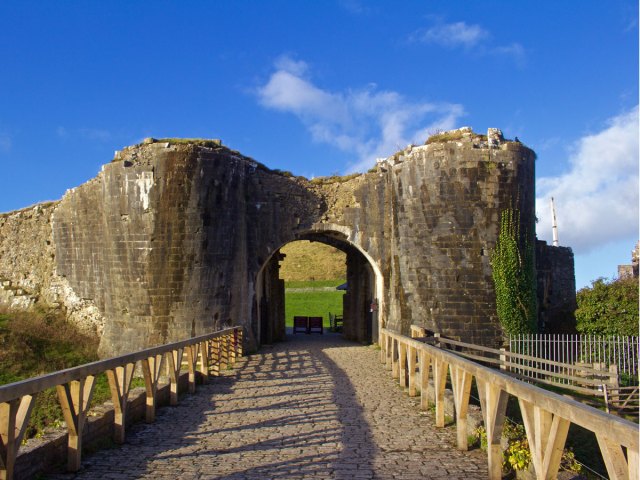
The ruins of Corfe Castle sit atop a small hill overlooking the Dorset countryside in the south of England. The fortification, destroyed by Oliver Cromwell’s army, has been here for around a thousand years, but historians believe that the area was settled long before that, perhaps even as early as 4000 BCE. Below the castle, a steam railway loops around the village of Corfe Castle, with historic buildings constructed from local grey Purbeck limestone. In the main square, a cross commemorates Queen Victoria’s Diamond Jubilee of 1897, and an area of common land known as the Halves separates the village’s two main roads, East and West Streets. Along them you’ll find a selection of charming pubs, cafés, and boutiques.
Beddgelert, Wales
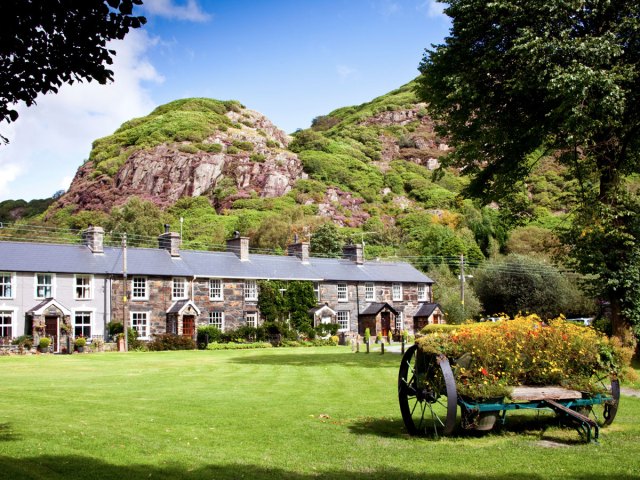
The village of Beddgelert is located in Wales’ Snowdonia National Park and is a stop along the Welsh Highland Railway. Its name translates to “Gelert’s grave,” a reference to a 13th-century folklore tale in which a dog named Gelert is killed by mistake by his heartbroken owner, Llywelyn the Great. The picturesque village Beddgelert sits at the confluence of the River Glaslyn and the River Colwyn. A photogenic stone bridge with two arches spans the Colwyn, flanked by stone cottages. Beyond, trails lead through woodlands, past waterfalls, and up hilly paths to scenic overlooks. Copper was mined here as far back as Roman times; visitors can don hard hats to learn more at the nearby Sygun Copper Mine.
Lavenham, England
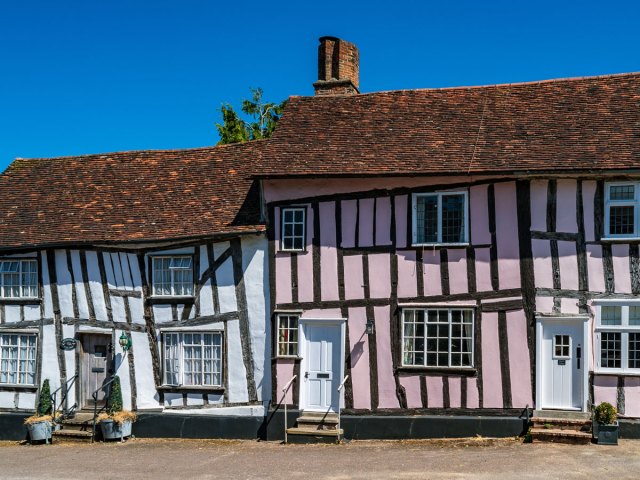
Located in the English county of Suffolk, Lavenham flourished in the 15th and 16th centuries thanks to the wool industry. Wealthy merchants erected timber-framed mansions and built a magnificent church in town. However, their prosperity was short-lived — when Dutch refugees settled in nearby Colchester, they undercut prices and Lavenham went into decline. But the past’s loss is today’s gain, as this quaint town retains much of its old-fashioned charm. Lavenham’s Guildhall tells the stories of the now crooked and weathered buildings and those who lived here. Once you’re finished, browse in the village’s many antiques shops.
Ballintoy, Northern Ireland
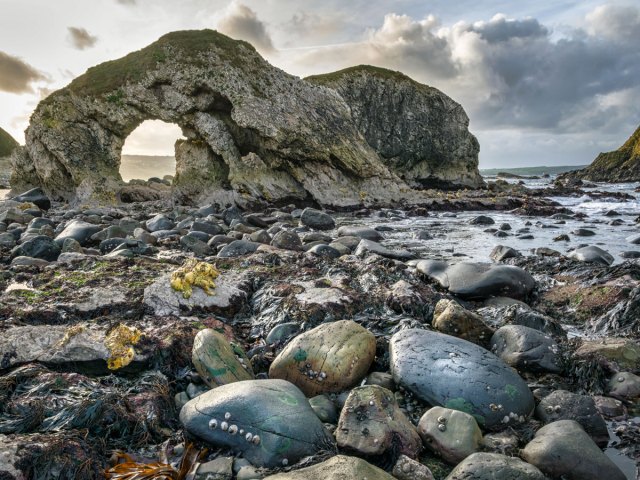
Visitors will find Ballintoy, once a filming location for Game of Thrones, on Northern Ireland’s popular Causeway Coastal Route. Erosion from the sea has created dramatic coastal scenery here, including sea stacks such as Elephant Rock and the UNESCO-listed Giant’s Causeway. Located on the edge of Ballintoy is Carrick-a-Rede, a vertigo-inducing rope bridge to Carrick Island that was first used by the area’s salmon fishermen in the 18th century. In the village itself, stone and whitewashed cottages provide a photogenic contrast to the verdant landscape. Follow the road down Knocksaughey Hill to enjoy a traditional Irish breakfast in the stone café beside Ballintoy’s small harbor.
Cley-next-the-Sea, England

Cley-next-the-Sea is one of the most appealing small villages on the scenic North Norfolk coast of England. However, it’s a bit of a misnomer, as marshland and reed beds now separate the village from the sea. Cley-next-the-Sea was once one of the area’s busiest ports, a place where barley, oats, malt, and fish were traded. Flint cottages date back to the 17th century, some of which are still private residences..Neighboring villages offer seal-watching boat trips and sandy beaches, but if you’re after peace and quiet, it’s hard to beat Cley-next-the-Sea. Visitors can stay in its 200-year-old tower mill or in rooms above the village’s cozy pub.
More from our network
Daily Passport is part of Inbox Studio, which publishes content that uplifts, informs, and inspires.






